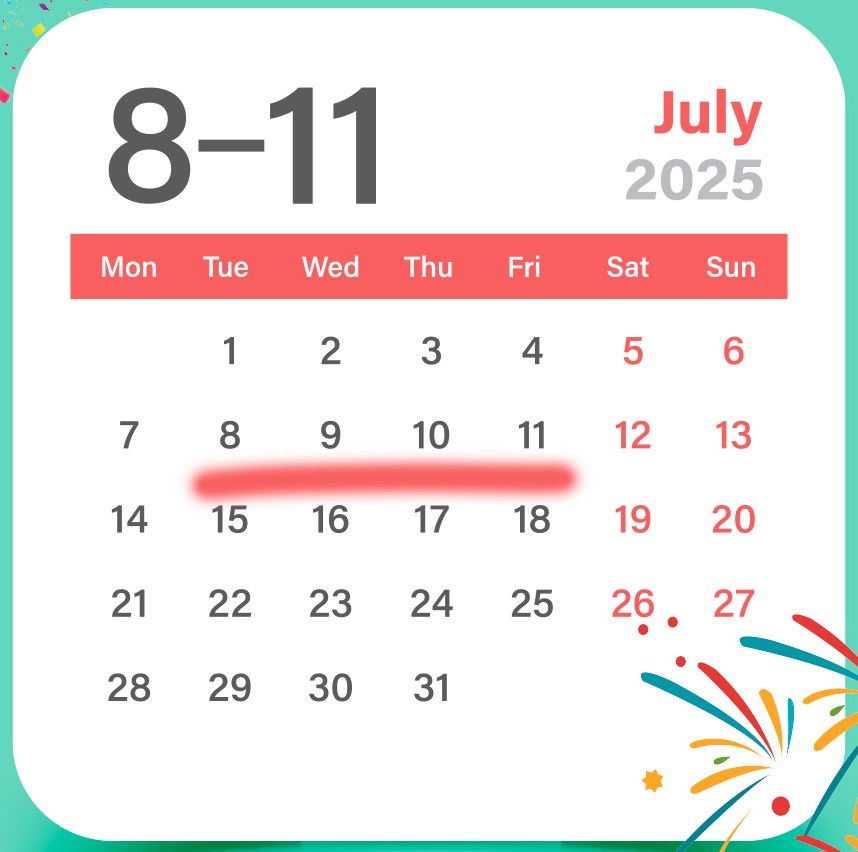Four days, smaller buys and copycat events: Everything we learned from Prime Day 2025

In another record for Amazon, an estimated $24.1 billion was spent over the four days of Prime Day 2025, according to Adobe Analytics.
This total surpassed Adobe’s projected figures of $23.8bn in sales, and makes it the biggest “four-day period including a Prime Day event”, says Amazon.
The event has been two days since 2019, increased to four this year for its 10th anniversary.
The effect of four days
The need to keep Prime Day big, exciting and lucrative is probably what prompted Amazon to extend it to four days – as well as the need to compete with other retailers’ sales weeks (more on that below).
As evidenced by our clients’ average sales (see below), if Amazon hadn’t extended it to four days, it’s likely it wouldn’t have been a record-breaking year.
But the effects on shoppers’ mindset is fascinating, and shows Amazon’s deep understanding of its customers. Consumer spending has been fairly stagnant this year. Extending to four days instead of two gave shoppers more time to compare prices and make up their mind, effectively making Prime Day purchases less impulsive, more considered – particularly for the big-ticket buys that Prime Day is so popular for. This is borne out by the fact that average order value increased on day 4 compared to day 2 and day 3.
Nonetheless, the first day was still the biggest, accounting for 34% of attributed sales, compared to 23% on both day 2 and day 4, and 19% on day 3. For comparison, Prime Day 2024 saw 55% of sales on day 1 and 45% on day 2.
Popular categories
On that note, it’s interesting that average order value fell 13% compared to Prime Day 2024, according to Tinuiti.
Everyday household items were really popular, like Dawn Platinum Powerwash Dish Spray. The grocery category did well, with offers like 50% off ice cream from Whole Foods Market, and $30 off purchases of $150 or more on Amazon Fresh.
One of the biggest of the big-ticket categories was appliances, showing once again that in this belt-tightening era, people’s spending priorities are household-related.
Beauty and healthcare were big, too. Amazon notes that Dyson, electric toothbrush brand Philips Sonicare and skincare brand Medicube were some of the big winners this year.
Electronics was a very popular category – it always is. Apple AirPods Pro 2, and Alexa-enabled devices including the Ring doorbell and Fire TV Stick HD, were some of the big sellers.
Ads strategy for four days
It’s clear advertisers recognised the potential of the four-day format, with Sponsored Products spend 20% up compared to the last four-day Prime Day period.
And it paid off: conversions attributed to Sponsored Products also rose 20%.
DSP advertisers started their exposure early, spending 56% more over the first seven days of July compared with the first seven days of June. Over the event itself, same-store DSP advertisers increased spend 31% year-on-year, with a 46% increase in ad impressions.
It shows the importance of advertising around the event, as well as during: ‘tentpole’ advertising over lead-in and lead-out periods can be really important for brands.
Thinking ahead to the Black Friday/Cyber Monday weekend, and assuming Prime Day is four days again next year, we recommend an advertising strategy that accounts for browsing on day 1, with retargeting on the following days to convert the browsers.
The Prime Day copycat events
July was once a dead time for shopping: with no major holidays to buy for, and back-to-school purchases still a month away, it used to be one of the quietest periods of the year for retailers.
That’s one of the reasons Prime Day was launched, and thanks to copycat events, it’s now a major period for the whole retail sphere, not just Amazon.
Walmart’s Deals Event overlaps with Prime Day, running this year from 8-13 July and targeting Amazon customers who may have been too late for Prime Day, or don’t have Prime membership. Target’s Circle Week also took place at the same time, running on 6-12 July. As for Best Buy, it holds its own ‘Black Friday in July’ event, capitalising on Prime Day’s original premise. This year’s was 7-13 July.
These competing sales have the effect of splitting customers’ attention somewhat: 82% of shoppers were expecting to browse at least one other marketplace, and half of those at least three other marketplaces, according to Tinuiti. It’s worth bearing in mind for future events that your competition isn’t just on Amazon, and you need to ensure your discounts are attractive enough to convert.
Results for e-Comas clients
For our Seller clients, this year’s Prime Day event was just as successful as last year, with sales growing by almost 150% - around the same as 2024.
They also got lots of traffic, with page views up by 92%.
For our Vendor clients, the event was higher than last year in traffic, but lower in revenue.
Glance views grew by 122%, better than last year, but the sales lift was only 82%.
e-Comas founder and CEO Jérôme de Guigné says: “Congratulations to our clients, most of whom had their most successful Prime Day ever.
“We’ve seen some really interesting results for our clients over the bumper four-day event. The supplements and healthcare categories were big on the first couple of days, with the big-ticket categories getting more traffic on the last day. Some very interesting trends for sellers to bear in mind for the Black Friday period and next year’s Prime Day too.”